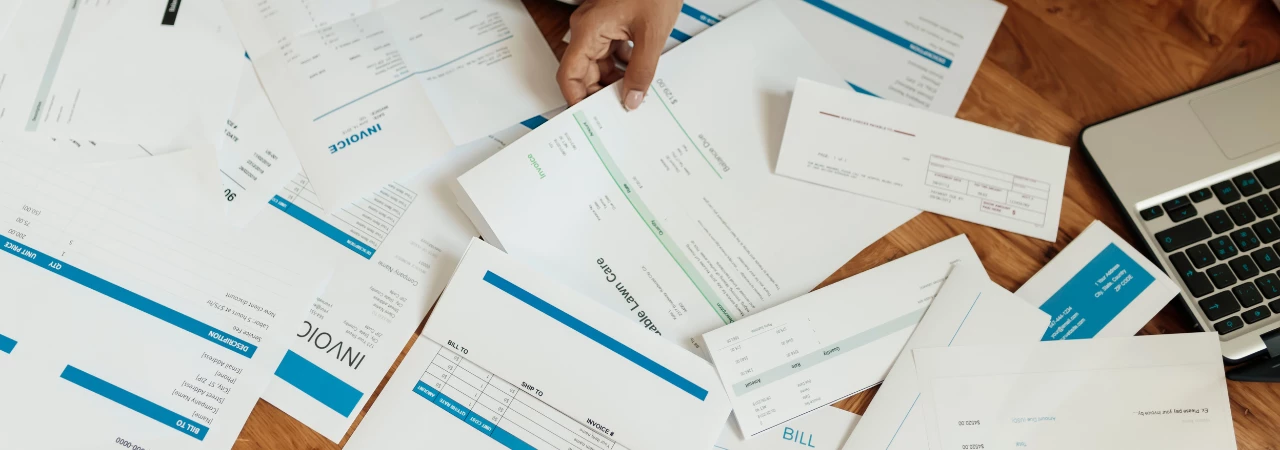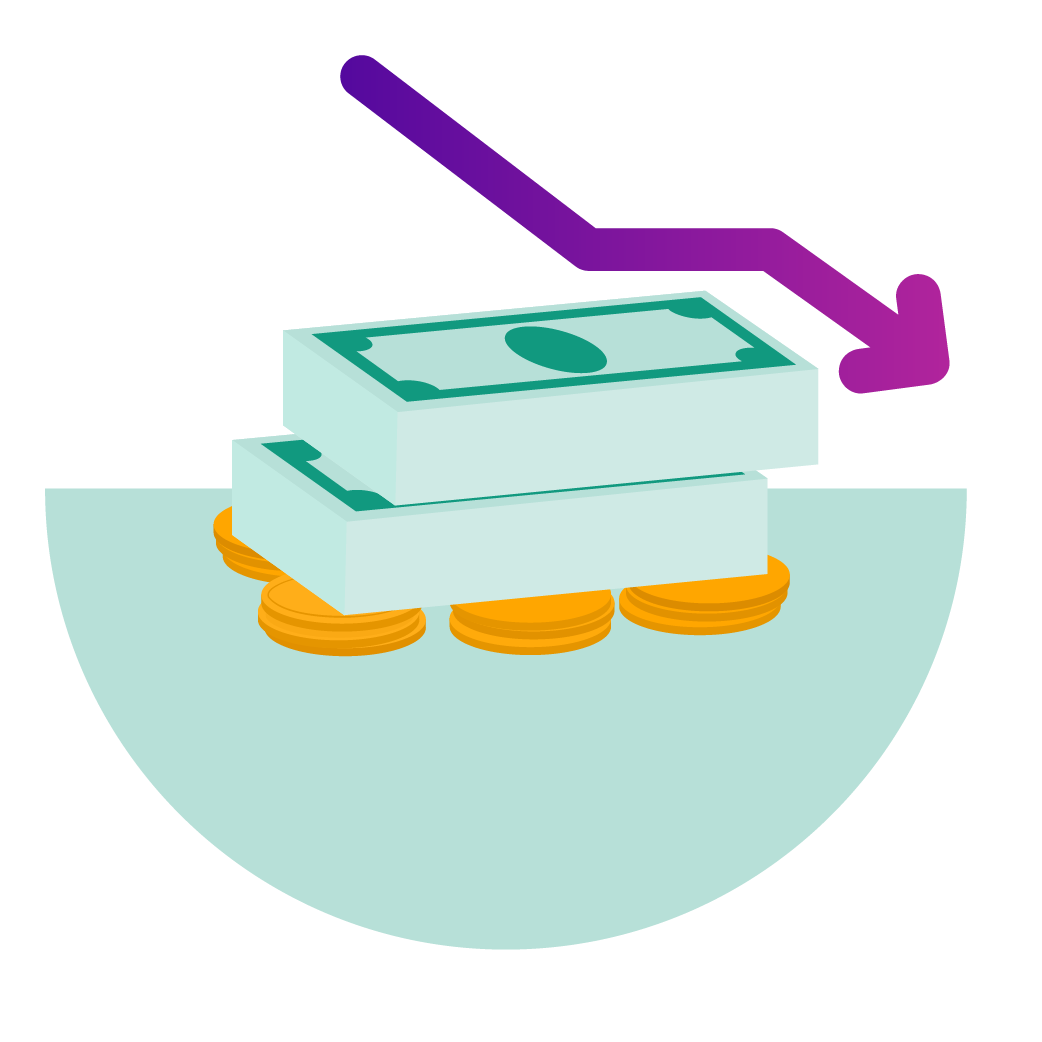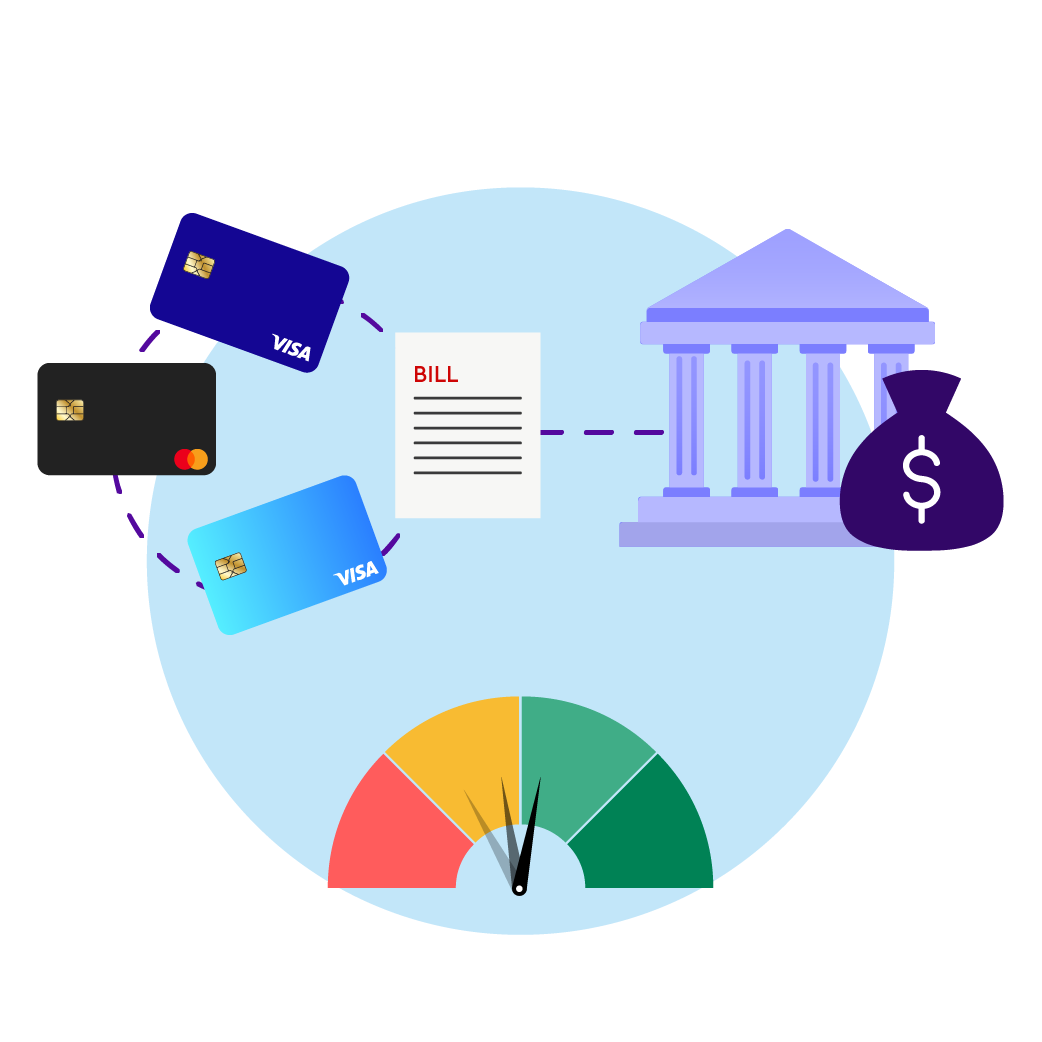February 6, 2025 | by Brian Truong

How to Identify Good vs Bad Debt
October 10, 2024
By Brian Truong
What is the difference between good debt and bad debt? Not everyone knows this, but not all debt is bad for your credit. In fact, there are types of debt that can help you increase your financial standing and your credit score when handled correctly. Understanding the difference between good and bad debt is the first step to maintaining your financial health as you make informed borrowing decisions. We hope to guide you through learning about the characteristics of good and bad debt, empowering you to manage your debts effectively and make the best decisions for your financial stability. Through this guide, you can choose the right types of debt and manage your existing debt effectively.
Understanding Good Debt
 Good debt can improve your life over time, looks good on your credit report, and can be paid off in a structured fashion. Good debt may be incurred for the purpose of investments that have the potential to increase in value or generate long-term benefits. Student loans allow you to invest in your education. Mortgages and HELOC loans allow you to buy a house or invest in home improvements that increase your property value. Business loans can empower your entrepreneurial ventures. Car loans provide you with a valuable vehicle and a structured repayment plan.
Good debt can improve your life over time, looks good on your credit report, and can be paid off in a structured fashion. Good debt may be incurred for the purpose of investments that have the potential to increase in value or generate long-term benefits. Student loans allow you to invest in your education. Mortgages and HELOC loans allow you to buy a house or invest in home improvements that increase your property value. Business loans can empower your entrepreneurial ventures. Car loans provide you with a valuable vehicle and a structured repayment plan.
Each type of good debt offers you benefits while minimizing the downsides of holding debt like interest or collections.
Characteristics of Good Debt
 You can identify good debt by its characteristics. Good debt often has several positive qualities that make it less harmful and more beneficial than bad debt.
You can identify good debt by its characteristics. Good debt often has several positive qualities that make it less harmful and more beneficial than bad debt.
- Low Interest Rates - You will pay less for the privilege of borrowing good debt with a lower interest rate. Beneficial and long-term loans often have a low interest rate that makes it less expensive to pay off the debt over time.
- Tax-Deductible Interest - In some cases, as with a mortgage, the interest on a debt is tax-deductible. This allows you to gain back what you paid in loan interest through tax returns.
- Potential for Wealth Creation or Asset Appreciation - Good debt provides a substantial benefit, like a college education, owning a house, or investing in value-appreciating assets.
- Structured Repayment - Most types of good debt provide a structured repayment system that allows you to make steady payments and see the debt disappear over time.
Good debt can also contribute to your personal or financial growth, like enhancing your earning potential. Most types of good debt also build a positive credit history as you pay off the debt in structured, regular payments. This is why a mortgage or car loan can improve your credit rating, even though they are types of debt.
Evaluating Bad Debt
 Bad debt includes debt that can harm you and offer little or no long-term value. Bad debts are incurred for non-essential purchases and things that lose or depreciate in value. It tends to come with high interest and may be pursued by debt collection instead of managed through a structured repayment process. Credit card debt is the best-known type of bad debt, but payday loans and financed luxury purchases are clear examples of debt that will harm your finances.
Bad debt includes debt that can harm you and offer little or no long-term value. Bad debts are incurred for non-essential purchases and things that lose or depreciate in value. It tends to come with high interest and may be pursued by debt collection instead of managed through a structured repayment process. Credit card debt is the best-known type of bad debt, but payday loans and financed luxury purchases are clear examples of debt that will harm your finances.
Characteristics of Bad Debt
 You can identify bad debt by a few key characteristics, as well. Avoid debt that has these signature features, as it is likely to cause harm and damage to your credit score.
You can identify bad debt by a few key characteristics, as well. Avoid debt that has these signature features, as it is likely to cause harm and damage to your credit score.
- High Interest Rates - High interest rates result in paying more for the debt itself, and make it more difficult to repay the full amount with increasing difficulty and cost over time.
- Short Repayment Terms - Not enough time to repay the debt with short repayment terms.
- Lack of Potential for Wealth or Asset Appreciation - The debt offers you no long-term benefits like wealth creation or assets that appreciate in value.
- Focus on Consequences for Non-Payment - Too many clauses or emphasis on late fees and other consequences for non-payment should be considered a red flag that the debt is structured to incur penalties.
Bad debt can cause serious negative consequences on your life and financial health. If you cannot pay off bad debt very quickly, it will damage your credit score, limiting your borrowing capacity and damaging your long-term financial stability. Collections can also cause increased financial stress, and these harmful effects are built into bad debt structures.
Strategies for Managing Good Debt
 When you have good debt, you can make it work for you. Make timely payments to keep each loan in good standing. Your loans should be structured for affordable payments and you may be able to renegotiate the repayment rate if your financial situation changes, for better or worse.
When you have good debt, you can make it work for you. Make timely payments to keep each loan in good standing. Your loans should be structured for affordable payments and you may be able to renegotiate the repayment rate if your financial situation changes, for better or worse.
Leverage the tax advantage. If you have debts with tax-deductible interest, don't forget to include them in your tax filing each year. You can also use good types of debt to finance appreciating assets, allowing you to build wealth over time that will last beyond the debt repayment.
Good debt can be a valuable tool for achieving your financial goals, building wealth, and securing financial independence beyond what you can achieve out-of-pocket today.
Strategies for Eliminating Bad Debt
If you have some bad debt, don't worry. There are several practical ways to get rid of bad debt and improve your finances.
Prioritize paying off the highest-interest debts first and build debt repayment into your budget to get rid of bad debts fast. You can also consolidate your debts into a single debt repayment loan. This transforms bad debt into good debt by paying your creditors with a structured loan. The structured loan allows you to pay off your total debt amount in measured low-interest payments with a reputable lender.
Developing a disciplined approach to debt repayment and avoiding further bad debt can help you break free of the cycle of high interest and the damage that bad debt can bring.
Achieving Debt Freedom and Financial Wellness
 Mastering the difference between good debt and bad debt is the first step to debt freedom and financial wellness. By prioritizing debt repayment and carefully living within your means, you can build your financial future and avoid the setbacks of high-interest debt. From there, you can build emergency savings and invest in value-appreciating assets like a home.
Mastering the difference between good debt and bad debt is the first step to debt freedom and financial wellness. By prioritizing debt repayment and carefully living within your means, you can build your financial future and avoid the setbacks of high-interest debt. From there, you can build emergency savings and invest in value-appreciating assets like a home.
Debt management offers a transformative impact on your financial wellness, empowering you to take control of your finances and pursue your long-term goals. Soon, you will carefully weigh the benefits of good debt investments without concern about looming bad debt.
Choosing the Right Debt for Your Financial Future
 When you can distinguish between good debt and bad debt, you are able to make more informed financial decisions to achieve your long-term financial success. The next steps toward rebuilding your finances for forward progress involve accessing your debt portfolio, prioritizing debt repayment, and leveraging good debt strategically while minimizing your exposure to bad debt. By mastering good debt vs bad debt, you can improve your financial well-being and achieve the financial future you want for yourself.
When you can distinguish between good debt and bad debt, you are able to make more informed financial decisions to achieve your long-term financial success. The next steps toward rebuilding your finances for forward progress involve accessing your debt portfolio, prioritizing debt repayment, and leveraging good debt strategically while minimizing your exposure to bad debt. By mastering good debt vs bad debt, you can improve your financial well-being and achieve the financial future you want for yourself.
Related Topics
Brian Truong was born in Canada (cool, eh?) and grew up in Sugar Land, Texas. Brian has over 12 years of SEO and marketing experience in a wide array of industries, including finance and real estate. When he’s not flexing his SEO and web development superpowers, he enjoys video games, anime, horror movies, and spending time with his cat, Chi.
Related articles you might like
December 23, 2024 | by Brian Truong
Budgeting 101: Comparing Fixed and Variable Costs
December 12, 2024 | by Brian Truong






